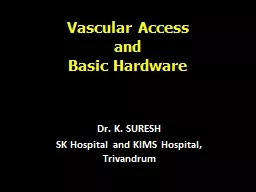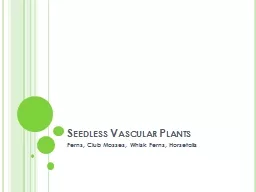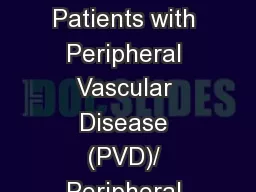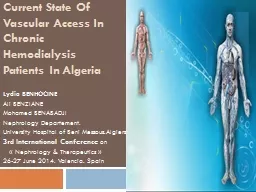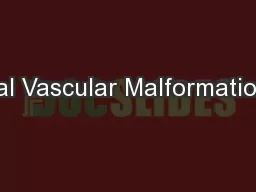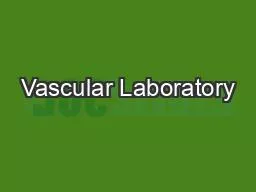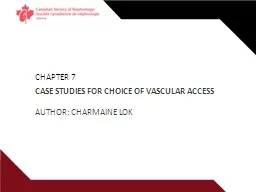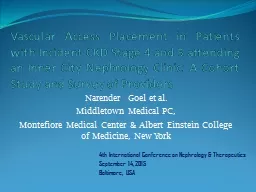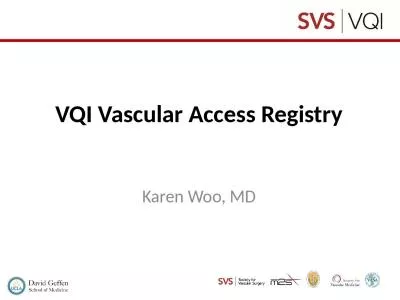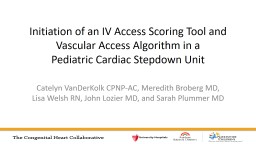PPT-Vascular Access
Author : marina-yarberry | Published Date : 2016-03-11
and Basic Hardware Dr K SURESH SK Hospital and KIMS Hospital Trivandrum Vascular access F irst important step in diagnostic interventional catheterization Percutaneous
Presentation Embed Code
Download Presentation
Download Presentation The PPT/PDF document "Vascular Access" is the property of its rightful owner. Permission is granted to download and print the materials on this website for personal, non-commercial use only, and to display it on your personal computer provided you do not modify the materials and that you retain all copyright notices contained in the materials. By downloading content from our website, you accept the terms of this agreement.
Vascular Access: Transcript
Download Rules Of Document
"Vascular Access"The content belongs to its owner. You may download and print it for personal use, without modification, and keep all copyright notices. By downloading, you agree to these terms.
Related Documents

